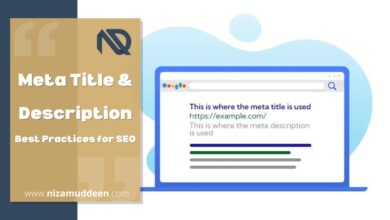Let’s imagine your website is like a ship sailing through the vast ocean of the internet, and you want it to be easily discovered by people looking for what you offer.
But, just like the ocean has hidden challenges, the online world has its own obstacles, and some of them are called spam.
Imagine spam like little troublemakers trying to mess with your ship’s navigation.
In our digital adventure, two main troublemakers are “spam score” powered by MOZ and “spam links.”
This exploration is like putting on a detective hat to understand these troublemakers better.
We’ll learn about how they can harm your website’s performance and, more importantly, what you can do to protect your online ship.
You’ll know how to steer clear of these challenges and ensure a safe and successful voyage for your website in the online world.
What is Spam Score?
Spam score is a metric used in SEO analysis to evaluate the likelihood of a website engaging in spammy or manipulative practices by MOZ. It serves as a numerical representation of the level of potential spam associated with a particular website.
This score is often calculated by SEO tools based on various factors, providing insights into the overall health of a site’s SEO profile.
Spam score is essentially a numerical value assigned to a website, indicating the extent to which it exhibits characteristics commonly associated with spam from 0 to 100. These characteristics may include the quality of backlinks, the presence of low-quality content, and other factors that search engines consider when assessing a site’s legitimacy.
Factors Considered in Calculating Spam Score
The calculation of spam score involves the analysis of multiple factors that collectively contribute to the overall assessment of a website’s potential for engaging in spammy activities. It is crucial for website owners and SEO professionals to identify and address potential issues by understanding these factors.
- Backlink Quality:
- Evaluation of the quality and relevance of backlinks pointing to the site.
- Low-quality or irrelevant backlinks can contribute to a higher spam score.
- Content Quality:
- Assessment of the content on the website.
- Low-quality or duplicate content may lead to an increase in spam score.
- User Experience:
- Examination of factors affecting user experience, such as page loading speed and mobile-friendliness.
- Poor user experience can be a contributing factor to a higher spam score.
- On-page SEO Practices:
- Analysis of on-page elements, including meta tags, headers, and keyword usage.
- Violations of on-page SEO best practices may impact spam score.
Significance of Spam Score in SEO Analysis
It is crucial for website owners and SEO professionals to proactively manage and enhance their site’s performance on search engines by understanding the significance of spam score.
A high spam score can have detrimental effects on a website’s SEO, making it essential to address and rectify any issues.
- Risk Assessment:
- High spam score indicates a higher risk of search engine penalties or ranking drops.
- Regular monitoring of spam score helps in assessing and mitigating potential risks.
- Search Engine Guidelines:
- Search engines like Google use spam score as an indicator of a website’s adherence to quality guidelines.
- Maintaining a low spam score aligns with search engine expectations and improves SEO.
- Competitive Edge:
- Websites with lower spam scores are more likely to rank higher in search engine results.
- Managing and reducing spam score can provide a competitive advantage in the online landscape.
Understanding the intricacies of spam score, its calculation, and its implications in SEO analysis empowers website owners and SEO professionals to make informed decisions and maintain a healthy online presence.
Types of Spam Links
Spam links are hyperlinks that are considered low-quality, irrelevant, or manipulative in the context of SEO. They are links pointing to a website from sources that violate search engine guidelines. It is crucial for maintaining a clean backlink profile and ensuring a positive impact on SEO by understanding what constitutes spam links .
- Low-Quality Backlinks:
- Links from websites with poor domain authority or questionable content.
- Such backlinks may be considered spam and can negatively impact SEO.
- Irrelevant Anchor Text:
- Anchor text that is unrelated or over-optimized with target keywords.
- Search engines may interpret this as an attempt to manipulate rankings.
- Link Farms and Networks:
- Inclusion in link schemes or networks solely for the purpose of building backlinks.
- Search engines penalize websites participating in such practices.
Examples of Spammy Link Practices
Identifying spammy link practices is essential for recognizing potential threats to a website’s SEO.
Examining common examples helps website owners and SEO professionals take proactive measures to avoid these practices and maintain a strong online presence.
- Paid Links:
- Purchasing links to artificially boost a website’s link profile.
- Violates search engine guidelines and may lead to penalties.
- Link Exchanges:
- Reciprocal arrangements where websites exchange links with each other.
- Search engines may view excessive link exchanges as manipulative.
- Comment Spam:
- Posting irrelevant or promotional links in the comments section of blogs or forums.
- Can lead to penalties and a negative impact on SEO.
How Spam Links Impact SEO
It is crucial for website owners seeking to maintain a positive online reputation and search engine rankings by understanding the repercussions of spam links on SEO.
The negative impact of spam links necessitates proactive measures for identification and removal.
- Search Engine Penalties:
- Search engines may penalize websites with a high number of spam links.
- Penalties can result in lower rankings and decreased visibility.
- Loss of Trust and Credibility:
- Presence of spam links can erode trust in the website’s legitimacy.
- Users and search engines may question the credibility of the site.
- Negative Ranking Effects:
- Spam links can contribute to a decline in search engine rankings.
- Lower rankings lead to reduced organic traffic and online visibility.
Recognizing spam link types and practices, as well as understanding their impact on SEO, empowers website owners to adopt effective link-building strategies. This enables them to maintain a backlink profile in line with search engine guidelines.
Threats Posed by Spam Score and Spam Links
Maintaining a favorable position in search engine rankings is crucial for online visibility and traffic.
A high spam score and the presence of spam links pose a significant threat to a website’s ranking, potentially causing it to drop in search engine results. It is essential for website owners and SEO professionals to implement effective strategies for mitigating this threat by understanding the impact on rankings .
- Algorithmic Ranking Factors:
- Search engine algorithms consider spam score when determining rankings.
- A high spam score signals potential manipulation, leading to a decrease in rankings.
- Competitive Disadvantage:
- Websites with lower spam scores are likely to outrank those with higher scores.
- Falling in rankings can result in a loss of organic traffic to competitors.
- Visibility in SERPs:
- Lower rankings reduce the visibility of a website in search engine results.
- Decreased visibility limits the site’s exposure to potential visitors.
Penalties from Search Engines
Search engines enforce guidelines to ensure fair and relevant search results. Violations of these guidelines, such as having a high spam score or engaging in spammy link practices, can lead to penalties.
It is crucial for website owners to avoid adverse consequences by understanding the potential penalties .
- Manual Penalties:
- Search engines may manually review and penalize websites with high spam scores.
- Manual penalties can result in lower rankings or removal from search results.
- Algorithmic Penalties:
- Automatic penalties triggered by algorithms due to spam-related factors.
- Websites may experience a sudden drop in rankings without explicit notification.
- Recovery Challenges:
- Recovering from search engine penalties can be time-consuming and challenging.
- Proactive measures to prevent penalties are essential for long-term SEO health.
Negative Impact on Online Visibility
Online visibility is a key factor in attracting organic traffic and reaching a target audience. The presence of a high spam score and spam links can negatively impact a website’s online visibility, diminishing its chances of being discovered by users searching for relevant content.
- Limited Organic Traffic:
- Decreased visibility in search results leads to a reduction in organic traffic.
- Websites with low visibility struggle to attract users actively seeking information.
- Trust and Perception:
- Users may perceive websites with high spam scores as less trustworthy.
- Negative perceptions can further contribute to a decline in online visibility.
- Impact on Brand Reputation:
- A tarnished online reputation due to spam-related issues affects brand perception.
- Maintaining a positive online presence is crucial for brand credibility and trust.
Understanding the threats posed by a high spam score and the presence of spam links is paramount for website owners and SEO professionals. Proactive measures to address and rectify these issues are essential for preserving search engine rankings, avoiding penalties, and maintaining a positive online presence.
Identifying Spam Score and Spam Links
To effectively manage and improve SEO, website owners and SEO professionals need reliable tools and methods for detecting spam score. These tools play a crucial role in providing insights into the health of a website’s SEO profile and identifying potential issues that could lead to a high spam score.
- SEO Analysis Tools:
- Utilization of popular SEO analysis tools that offer spam score metrics.
- Examples include Moz, SEMrush, and Ahrefs, which provide comprehensive insights into a website’s overall SEO performance.
- Google Search Console:
- Leveraging Google Search Console to monitor and analyze spam-related issues.
- Google Search Console provides valuable information about manual actions, security issues, and the overall health of a website.
- Spam Score Algorithms:
- Understanding the algorithms used by SEO tools to calculate spam scores.
- Familiarity with these algorithms enhances the ability to interpret and address specific factors contributing to the spam score.
Strategies for Identifying Spam Links
Identifying spam links is a critical aspect of maintaining a clean and reputable backlink profile. Various strategies can be employed to pinpoint and address spammy links, ensuring that a website complies with search engine guidelines and avoids penalties.
- Backlink Audits:
- Conducting regular backlink audits to review the entire link profile.
- Identifying and evaluating each link helps in detecting any that may be considered spam.
- Anchor Text Analysis:
- Analyzing anchor text diversity and relevance.
- Over-optimized or irrelevant anchor text can be an indication of potential spam links.
- Link Source Evaluation:
- Assessing the quality and authority of the websites linking to the target site.
- Links from low-quality or suspicious sources may need further investigation.
Importance of Regular Monitoring
Regular monitoring of spam score and links is essential for maintaining a healthy and sustainable online presence. Proactive and consistent oversight allows website owners to detect issues early, implement timely corrective actions, and prevent potential negative impacts on SEO.
- Timely Issue Resolution:
- Early detection enables prompt resolution of identified issues.
- Timely action helps prevent the escalation of problems that could lead to a high spam score or penalties.
- Adaptation to Algorithm Changes:
- Keeping abreast of changes in search engine algorithms.
- Regular monitoring allows website owners to adapt their strategies to evolving search engine guidelines.
- Preventive SEO Measures:
- Implementing preventive measures based on ongoing monitoring insights.
- Proactively addressing potential issues helps maintain a clean SEO profile and avoid future problems.
Identifying spam score and links involves the use of effective tools, strategic analysis, and consistent monitoring practices. By adopting these approaches, website owners can stay proactive in maintaining a clean and reputable online presence, ultimately contributing to long-term SEO success.
Addressing Spam Score and Spam Links
A high spam score can significantly impact a website’s SEO performance, making it crucial to implement effective strategies for improvement. By understanding and addressing the factors contributing to the spam score, website owners can enhance their site’s overall health and boost its credibility in the eyes of search engines.
- Backlink Quality Improvement:
- Actively seek high-quality and relevant backlinks from reputable sources.
- Building a strong, natural backlink profile contributes to a lower spam score.
- Content Optimization:
- Review and enhance on-site content for quality and relevance.
- Well-optimized content aligns with search engine guidelines, positively impacting the spam score.
- User Experience Enhancement:
- Focus on improving user experience by optimizing site speed and mobile responsiveness.
- A positive user experience can contribute to a lower spam score.
Removing or Disavowing Spam Links
Identifying and addressing spam links is a critical step in maintaining a clean and SEO-friendly website. Whether through manual removal or disavowal, taking action against spam links is essential for mitigating the negative impact on search engine rankings and ensuring compliance with search engine guidelines.
- Backlink Audit and Removal:
- Conduct a thorough backlink audit to identify spammy links.
- Actively reach out to website owners to request the removal of undesirable links.
- Disavowal Process:
- Use the Google Disavow Tool to disavow links that cannot be removed manually.
- This tool informs search engines to ignore specific links when assessing a site’s ranking.
- Regular Monitoring for New Links:
- Implement ongoing monitoring to identify and address new spam links promptly.
- Timely intervention prevents the accumulation of harmful links over time.
Importance of a Clean Link Profile
Maintaining a clean link profile is fundamental to a website’s SEO success. Search engines prioritize high-quality, relevant links, and a clean link profile not only positively influences rankings but also helps in preventing penalties associated with spam links.
- Search Engine Guidelines Adherence:
- Align the link-building strategy with search engine guidelines.
- Adhering to guidelines ensures a clean link profile and reduces the risk of penalties.
- Quality Over Quantity:
- Prioritize the quality and relevance of links over their quantity.
- A focused approach to link building contributes to a cleaner and more effective link profile.
- Regular Link Audits:
- Schedule periodic link audits to assess the health of the link profile.
- Regular audits allow for the identification and removal of any potentially harmful links.
Addressing spam score and links involves a proactive approach to improving the overall health of a website’s SEO. By implementing strategies for improvement, removing or disavowing spam links, and maintaining a clean link profile, website owners can safeguard their online presence and enhance their performance in search engine rankings.
Summary to the Topic
In conclusion, maintaining a strong and resilient online presence requires vigilant management of spam score and spam links. Key takeaways include:
- Understanding the Threats:
- Recognition of the threats posed by high spam scores and spam links to search engine rankings and online visibility.
- Proactive Identification:
- Utilization of tools and strategies for proactive identification of spam score and links to address issues early on.
- Strategic Addressing:
- Implementation of strategic approaches, such as improving spam score through quality backlinks and relevant content, and removing or disavowing harmful links.
- Long-term Consequences:
- Awareness of the potential long-term consequences, including persistent ranking declines, damage to online reputation, and recovery challenges.
By adopting a proactive and strategic approach, website owners and SEO professionals can navigate the evolving landscape of search engine guidelines, mitigate risks associated with spam, and safeguard the long-term success of their SEO efforts.



